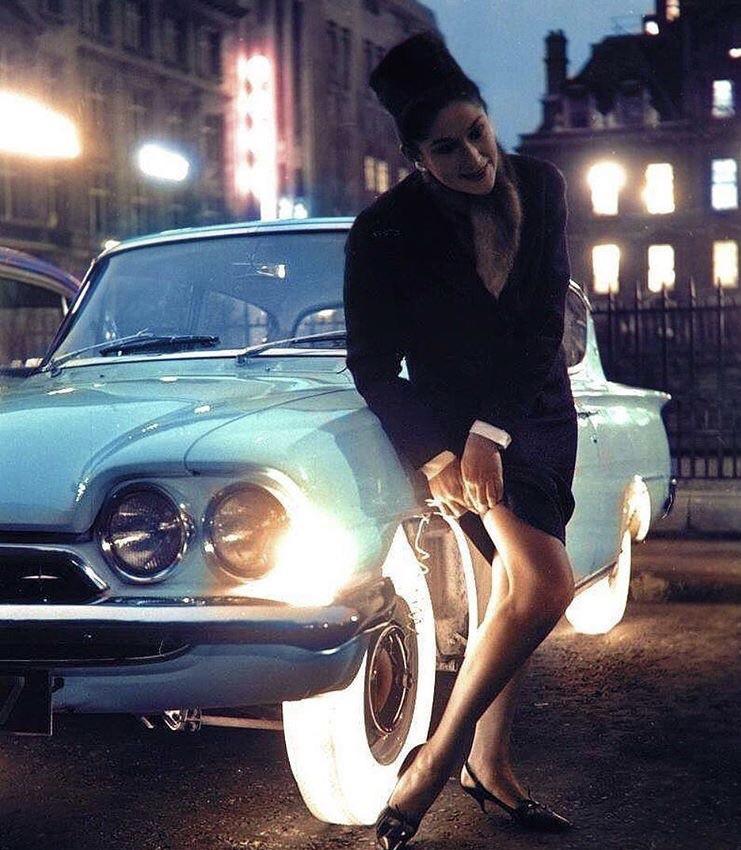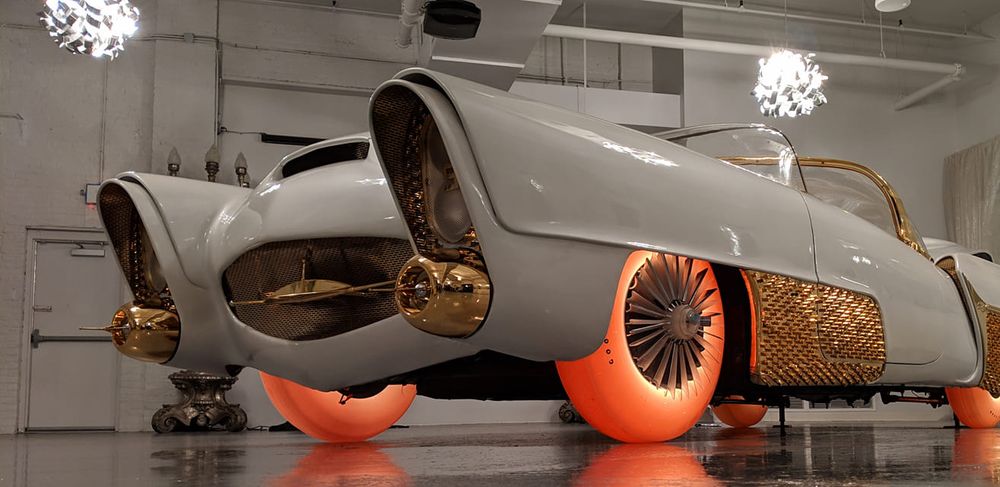In the late 1930s, a German chemist named Otto Bayer synthesized a new organic polymer called polyurethane. Over the decades polyurethane found many applications, especially in the automobile industry, where the soft, elastic polymer is used to manufacture high-resilience foam cushion for seats, headrests, armrests, as well as to line roof, dashboards and instrument panels. Bayer went so far as to exhibit an experimental car whose body was made entirely out of polyurethane. But it was legendary tire manufacturer Goodyear that turned heads by inventing a new use for the wonder material—tires, and not just any tire; these tires glowed.

A woman adjusts her stocking using the light emitted by the Goodyear tire on an October night in 1961.
Unlike traditional rubber tires, where multiple layers of rubber, textile elements, in addition to steel belts, beads, ply, tread, and other components are compressed together in a long and involved processes, manufacturing tires out of polyurethane was a remarkably easy process. All that needs to be done is to mix the polyurethane chemicals together, pour the mixture into tire-shaped molds and bake them in an oven. Goodyear added tiny amounts of dye to the mixture before baking, and voila!—colored tires. These tires could be matched to the car, and perhaps, even to the wife’s outfit.
“Someday a wife may tell a husband: 'Charlie, go out and change the tires. I'm wearing my blue dress tonight.’”, Goodyear's development manager John J. Hartz said in 1962.
But what really made this tire compound that Goodyear called Neothane unique was its ability pass light. Goodyear saw an opportunity and fitted 18 tiny lightbulbs inside the tire, on the rims, producing a vivid glow at night. Goodyear hoped that illuminated tires would make driving safer in fog, or the tires themselves could work as turn signals and brake lights. The company was enthusiastic about its future. In a 1961 press release, the company predicted a new era of fashionable automobiles:
“Once the tires reach the market—and that could happen in a few years—auto stylists may use them to carry out a car’s color scheme, perhaps matching the tires with the upholstery. And it’s not at all unlikely that milady will want tires that enhance her wardrobe, her hair, or even her eyes.
Imagine, if you will, one girl telling another: ‘But, my dear, green tires just don’t do a thing for your complexion.’
When that day comes, it will mean a whole new frontier for the tire designer.”

A restored 1958 Golden Sahara II with Goodyear's Illuminated Neothane tires.
Fortunately, or unfortunately, the tires didn’t reach the market. Testing showed that Neothane tires didn’t perform well in wet weather and melted under heavy braking. Other drivers found them distracting. The Life magazine reported that “motorists have been so enthralled by the pretty colors that they have gone through red lights or just stopped to stare.”
In the end, Goodyear realized that producing Neothane tires commercially would be too expensive anyway, and the idea fizzled out.
References:
# Evan Ackerman, Goodyear’s Illuminated Tires Promised a Whole New Frontier in Car Fashion, IEEE Spectrum
# Rob Stumpf, Why Goodyear's Illuminated Tires Were Way Ahead of Their Time, The Drive



Comments
Post a Comment